
Steve Jackson Games (SJGames) is a game company, founded in 1980 by Steve Jackson, that creates and publishes role-playing, board, and card games, and the gaming magazine Pyramid.
Star Wars: Customizable Card Game (SW:CCG) is an out-of-print customizable card game based on the Star Wars fictional universe. It was created by Decipher, Inc., which also produced the Star Trek Customizable Card Game and The Lord of the Rings Trading Card Game. The game was produced from December 1995 until December 2001. Since 2002, the game has been maintained by the Star Wars CCG Players Committee, with new virtual cards being released every few months and the capability to play both in person and online.
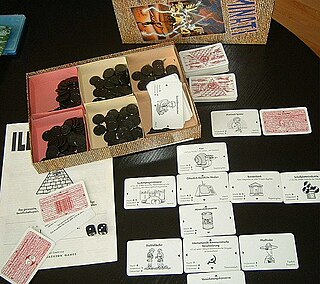
Illuminati is a card game made by Steve Jackson Games (SJG), inspired by the 1975 book, The Illuminatus! Trilogy, by Robert Anton Wilson and Robert Shea. The game has ominous secret societies competing with each other to control the world through various means, including legal, illegal, and even mystical. It was designed as a "tongue-in-cheek rather than serious" take on conspiracy theories. It contains groups named similarly to real world organizations, such as the Society for Creative Anachronism and the Symbionese Liberation Army. It can be played by two to eight players. Depending on the number of players, a game can take between one and six hours.
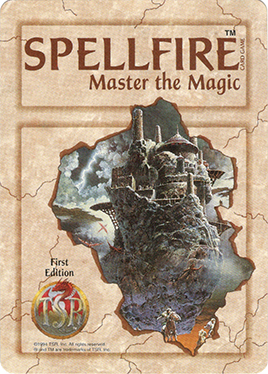
Spellfire: Master the Magic is an out-of-print collectible card game (CCG) created by TSR, Inc. and based on their popular Dungeons & Dragons role playing game. The game appeared first in April 1994, shortly after the introduction of Magic: The Gathering, in the wake of the success enjoyed by trading card games. It was the second CCG to be released, preceding Wizards of the Coast's second CCG Jyhad by two months.

Cosmic Encounter is a science fiction–themed strategy board game designed by "Future Pastimes" and originally published by Eon Games in 1977. In it, each player takes the role of a particular alien species, each with a unique power to bend or break one of the rules of the game, trying to establish control over the universe. The game was inducted into the Academy of Adventure Gaming Arts & Design Adventure Gaming Hall of Fame in 1997.
Vampire: The Eternal Struggle is a multiplayer collectible card game published by White Wolf Publishing. It is set in the World of Darkness and is based on the Vampire: The Masquerade roleplaying game.
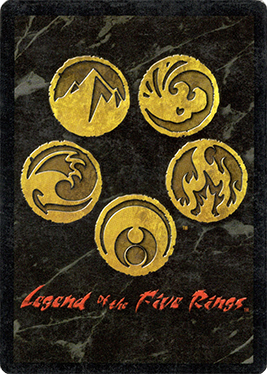
Legend of the Five Rings (L5R) is an out-of-print collectible card game created by a joint venture featuring Alderac Entertainment Group and ISOMEDIA in 1995 and published until 2015, when it was announced that the game would be discontinued for a rules-incompatible successor that will be part of Fantasy Flight Games' Living Card Game line. L5R takes place in the fictional empire of Rokugan from the Legend of the Five Rings setting, where several clans and factions vie for domination over the empire.
The collectible card game Magic: The Gathering published seven expansion sets from 1993–1995, and one compilation set. These sets contained new cards that "expanded" on the base sets of Magic with their own mechanical theme and setting; these new cards could be played on their own, or mixed in with decks created from cards in the base sets. With Magic's runaway success, many of the printings of these early sets were too small to satisfy the rapidly growing fanbase. Cards from them became rare, hard to find, and expensive. It was not until Fallen Empires and Homelands that Wizards of the Coast was able to print enough cards to meet demand; additionally, Wizards of the Coast published Chronicles, a reprint set that helped fix many of the scarcity issues with the earliest sets.
Ice Age is a block of three expansion sets in Magic: The Gathering, consisting of the Ice Age, Alliances and Coldsnap sets. It is also the titular first set in the block. The Ice Age set is the eleventh set and the sixth expansion set, previewed at the Canadian Card and Comics Spectacular in early June 1995, and released later that month. Set in the years from 450 to 2934 AR, the set describes a world set in perpetual winter due to the events in Antiquities. Ice Age was followed up June 1996 with Alliances, the fourteenth Magic: The Gathering set and eighth expansion set.; and on July 21, 2006 with Coldsnap. The time period between Alliances and Coldsnap was the longest period of time between the beginning and the completion of a full block in Magic. Originally, the set Homelands, released in October 1995, was the second set in the Ice Age block, but following the release of Coldsnap, Homelands was removed from the block in favor of Coldsnap.
The collectible card game Magic: The Gathering published nine base sets from 1993–2007, also referred to as core sets. The base sets were considered descendants of the original Limited Edition, and shaped the default setting and feel of Magic. These sets consisted entirely of reprinted cards. These cards were generally simpler than cards in expansion sets, omitting multicolored cards, and used only the original abilities and keywords of Magic such as Flying and Trample. This simplicity led to many cards from these sets being considered "staples" of deck design. All cards were given a white border to mark them as reprints, with a few exceptions. From Fourth Edition in 1995 onward, a new base set would come out once per two years in the spring or early summer; for tournament play, that set would be legal for two years in the Standard format until the next core set replaced it.
Mirage was the first official block structure in Magic: The Gathering. This new block structure consisted of three expansion sets and would continue for nearly two decades, finally ending with Khans of Tarkir in 2014. The new block structure also set up the precedent that the first set in the block also became the name for the entire block. Mirage block consisted of three sets: Mirage, Visions and Weatherlight.

Wyvern is an out-of-print collectible card game featuring dragons and wyverns battling for treasure. The game was produced by U.S. Games Systems, with the first, "Premiere Limited", card set launched in January 1995. In 1997, the "Kingdom Unlimited" edition was released, featuring 277 cards, and marking the end of production.

Dune is an out-of-print collectible card game produced by Last Unicorn Games and Five Rings Publishing Group, and later Wizards of the Coast. Set in the Dune universe based on the books written by Frank Herbert, the game pits two or more players against each other, each in control of a minor house vying for entry in the Landsraad.
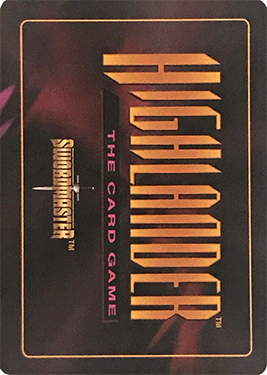
Highlander: The Card Game is an out-of-print collectible card game based on the Highlander franchise of films and television series. It was released in March 1995. The original set had 165 cards sold in 16-card booster packs.
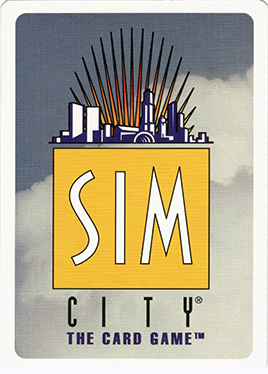
Sim City: The Card Game is an out-of-print collectible card game based on the video game SimCity by Maxis. The goal of the game is to build a city from the ground up. Players take turns playing cards representing city blocks and collect profit.
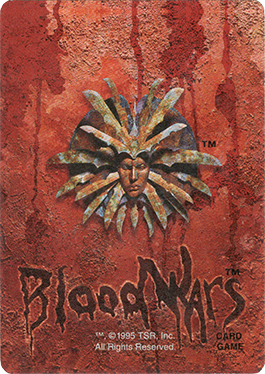
Blood Wars is an out-of-print collectible card game produced by TSR, based on the Planescape campaign setting from Dungeons & Dragons.

Doomtrooper, also known as Doom Trooper, is an out-of-print collectible card game designed by Bryan Winter and was released in January 1995. It was originally published by Target Games and Heartbreaker Hobbies. It is based on concepts from the Mutant Chronicles franchise. Players use warriors to attack and gain either Promotion Points or Destiny Points. Promotion points can be used to win; Destiny Points are used to purchase more warriors and equipment. There are 13 different card types and over 1100 different cards available.

A collectible card game (CCG), also called a trading card game (TCG) among other names, is a type of card game that mixes strategic deck building elements with features of trading cards, introduced with Magic: The Gathering in 1993.

The BattleTech Trading Card Game is an out-of-print collectible card game (CCG) set in the BattleTech universe. The game was developed by Wizards of the Coast (WotC) for FASA and released in 1996.
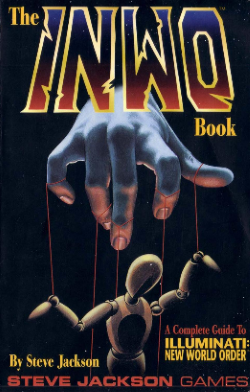
The INWO Book is a book published by Steve Jackson Games (SJG) in 1995 about the company's satirical collectible card game (CCG) Illuminati: New World Order.















